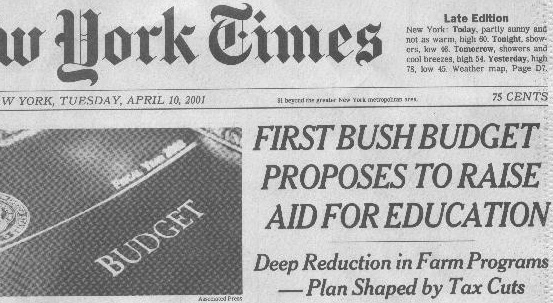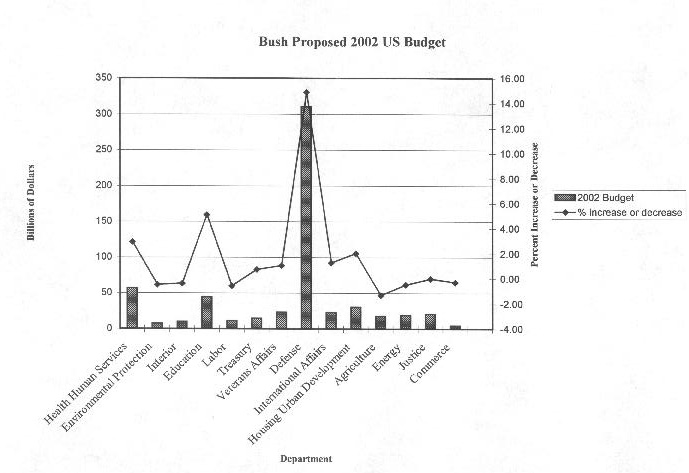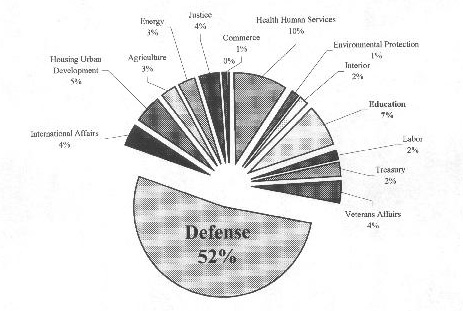US Militarism and the National Budget
The April 10 TIMES lead headline announced that the "First Bush Budget
Proposes to Raise Aid For Education," but
accompanying statistics showed the education budget is a mere 14% of the
military budget, which is 52% of total proposed
The evaporation of the post-Cold War "peace dividend" does not seem newsworthy. But it should certainly be news that since the end of the Cold War there has been a dramatic proportional increase in US military spending compared to welfare, environmental protection, worker safety, education, and such. This shift in government priorities toward the military and away from civilian services merits a headline article.
In addition, the scale of the
The failure of the NY TIMES to report reponsibly
on the budget this year will have been obvious to many readers; but this
failure may also represent a positive commitment at the TIMES to promote a view
of the post-Cold War world that is blind to global
The Council
for A Livable World makes some obvious points
that seem to have been missed by the TIMES and other news
broadcasters. Referring to the military budget proposed by the elder Bush, in
1992, Jeffrey R. Gerlach, a foreign policy, analyst
at the Cato Institute, pointed out in an article
in Policy Analysis that, "According to the Congressional Budget
Office, measured in real terms, defense spending is roughly the same now as it
was in the early 1960s, at the height of the Cold War." He went on to
suggest that, "If approximately $280 billion was sufficient when the
It should be noted, however, that data for tables and charts that follow appear on the same page as the April 10 TIMES front page story headline. This indicates that very little work is often required to use publicly available for educational purposes.



Please note the proportions involved in discussions of the
|
|
Dept Budget as Percent of Defense Budget |
|
Commerce |
2% |
|
Environmental Protection |
2% |
|
Interior |
3% |
|
Labor |
4% |
|
Treasury |
5% |
|
Transportation |
5% |
|
Agriculture |
6% |
|
Energy |
6% |
|
Justice |
7% |
|
International Affairs |
7% |
|
Veterans Affairs |
8% |
|
Housing Urban Development |
10% |
|
Education |
14% |
|
Health Human Services |
18% |